In the United States alone, a child is injured from falling from a high chair every hour. Parents might be overprotective with their kids when it comes to playing outside the house, but hidden dangers can be also found in seemingly safe places for kids like playgrounds or even at home.
Bright Side gathered a list of all those things that might look safe, but in reality, can be potential dangers for your child. Keeping in mind that our treasured toddlers need our 24/7 supervision, this list will give you a heads up on what other things you need to beware of in order to protect your little ones.
1. Letting them play dangerous sports
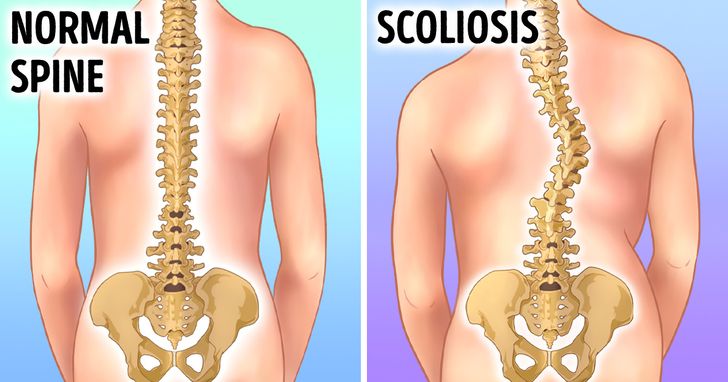
There are numerous advantages for kids who are practicing sports, but there is also a specific list of high-impact sports that can be potentially dangerous for them. The “big 6” to avoid, as forensic pathologist Dr. Bennet Omalu advises, are American football, ice hockey, mixed martial arts, boxing, wrestling, and rugby. During these sports, a child receives multiple blows to the head, which have the risk of exposure to brain damage, according to neuroscientists.
Also, high-impact activities can cause significant compression of the spine and hyperextension of the back that can lead to serious injuries. The repeated engagement in these sports can aggravate scoliosis over time. Squatting, lifting weight over the head, hard landings like in cheerleading, and long-distance running should be avoided.
2. Letting them sit in a W position
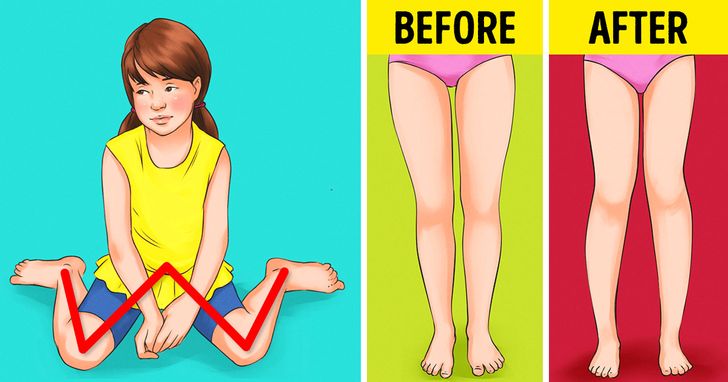
The W position is a really common way kids choose to sit when playing on the floor especially because it’s comfortable for them. However, it is probably the most dangerous position for children to adopt and doctors advise parents to discourage their kiddos from sitting like this.
Moreover, osteopath Avni Trivedi stated during an interview that this position has become “a new health epidemic” that can highly impact a child’s development in their leg joints and hip bones, weaken their trunk muscles, and place extra pressure on their back, neck, and shoulders.
3. Giving them tablets (especially toddlers)
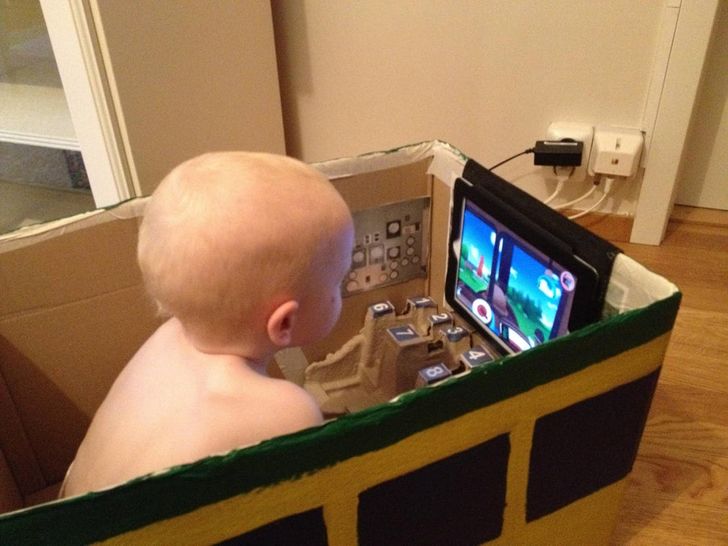
Kiddos spend more and more time in front of screens, especially their favorite new toy, the tablet. Doctors warn parents to reduce “screen time” as much possible because of the blue light, a portion of harmful light that these screens emit.
Common symptoms of overexposure to blue light are headaches, neck and shoulder pain, dry or irritated eyes, but also psychological ones like reduced attention span, poor behavior, and irritability. It can also affect their sleep and wake cycle, making them feel tired and exhausted.
4. Letting them go down the slide on your lap
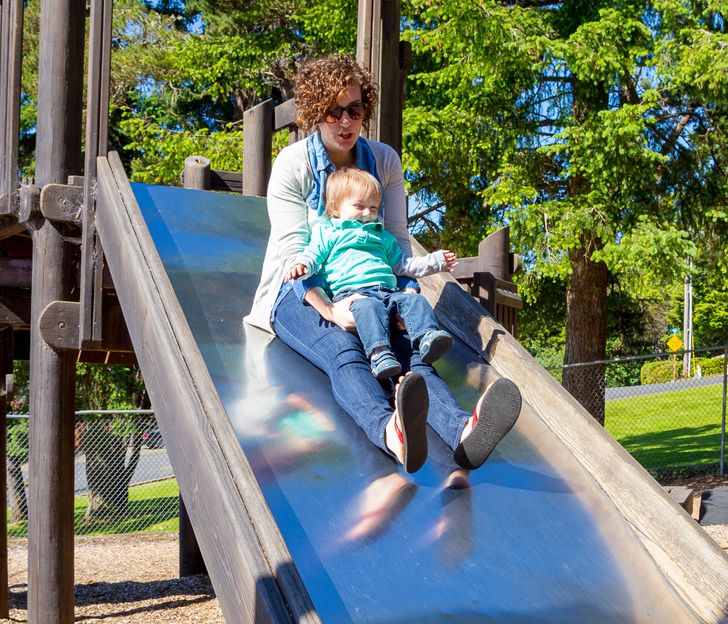
Most parents think that when they are on the playground with their kiddos, it’s safer to go down the slide with their child on their lap. Actually, this is an extremely hidden playground danger that can cause leg fractures in children.
As pediatrician Dr. Diane Arnaout explains, the parent’s weight pushes everything downward at a higher speed, so in the case that any part of the kid’s shoe or arm sticks out of the slide, the leg or arm could twist and break.
5. Playing the Chubby Bunny game with your kids
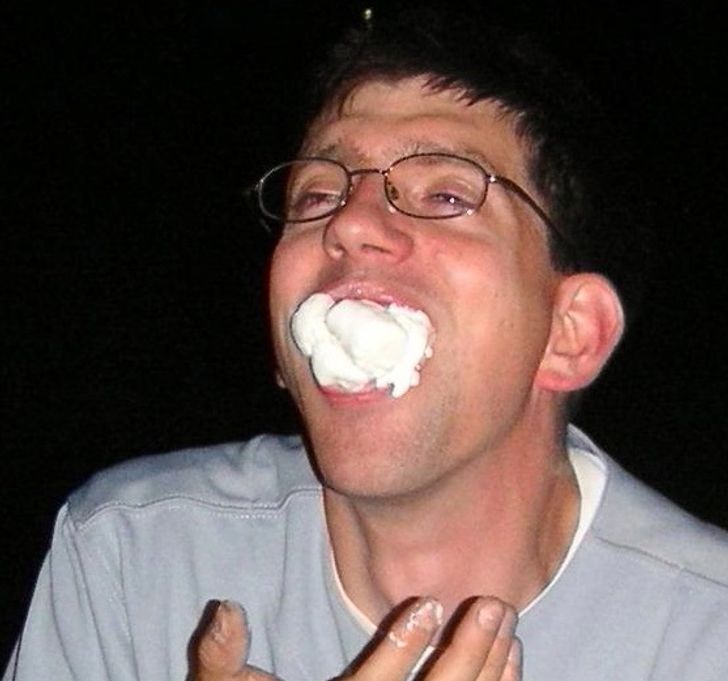
Chubby Bunny is a very popular challenge kids usually do with their parents, where they have to place an increasing number of marshmallows in their mouth while stating the phrase “chubby bunny” as clear as possible.
Even though kids might find it extra fun and tasty, since they get to consume their favorite dessert after the game is over, this is a dangerous challenge and several incidents of chocking have occurred.
6. Standing on chairs
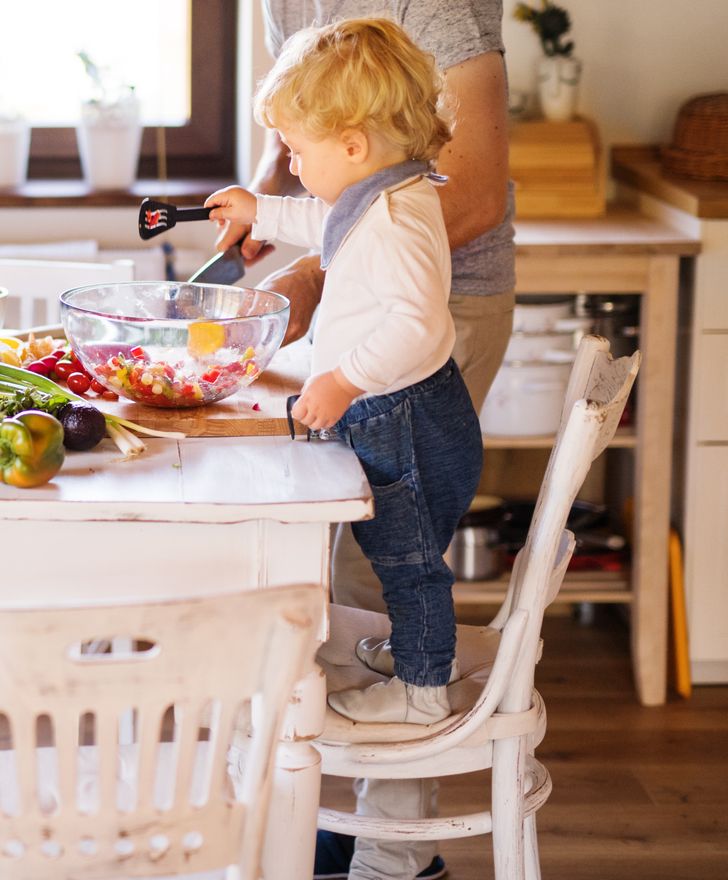
This is one of the most common reasons for children’s injuries, especially among toddlers. Kids are unstoppable, and they usually want to climb everything, including chairs. Falling from high chairs, in particular, is the main cause of head trauma and concussions.
Specialists advise parents to strap their kids into meal chairs, not allowing them to stand up, and also to always supervise them because there is always a possibility for the child to kick off from the table and knock over their chair.
7. Playing in the dirt
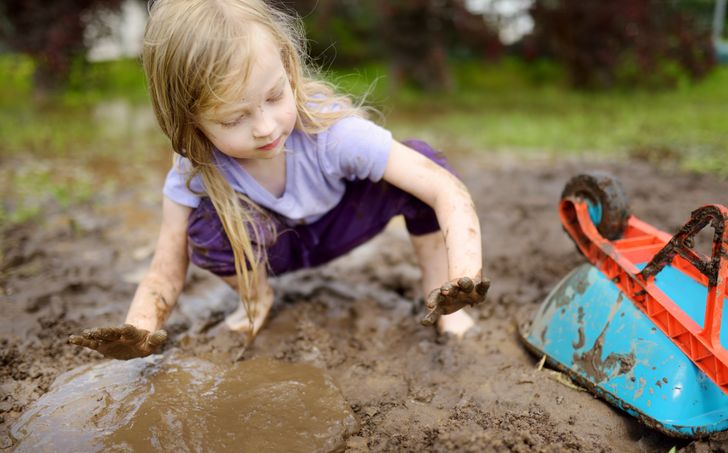
Kids love to get all dirty playing outdoors. What needs to be considered carefully though is where they play, because digging and playing with dirt can be extremely harmful to children. The main cause is lead and it’s dangerous effects on our health.
Even though lead paint in houses has been banned, there are still places with peeling lead paint like barns, garages, and old housing. Children might be exposed to that from bare soil since lead has been found in yards that were near those places. Lead itself is a poisonous metal that can cause brain damage and life-long problems.
8. Jumping on trampolines
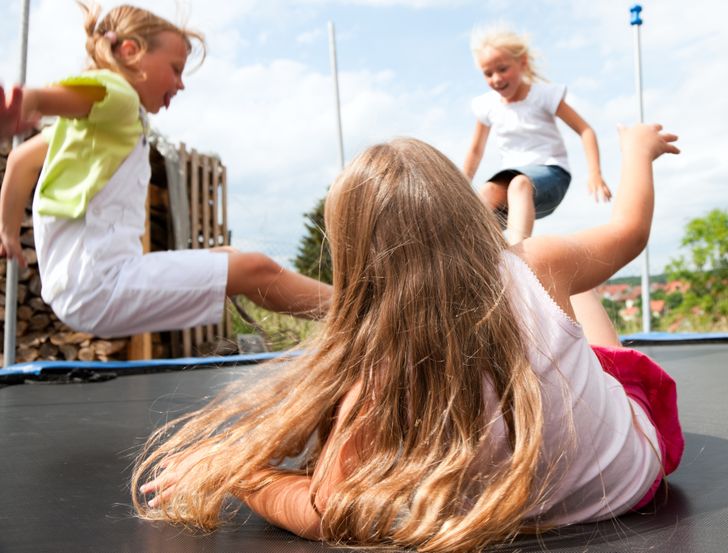
Many parents have installed trampolines, both big and small, in their yards and their kids adore them. This seemingly funny and innocent jumping apparatus can be seriously harmful to children.
According to the American Academy of Pediatrics’ instructions, trampolines shouldn’t be in any home with kiddos. This is because injuries caused by jumping on them happen really often and include broken bones, head injuries, like concussions, and harsher trauma that can lead to permanent brain damage and even death.
9. Mowing the loan with them
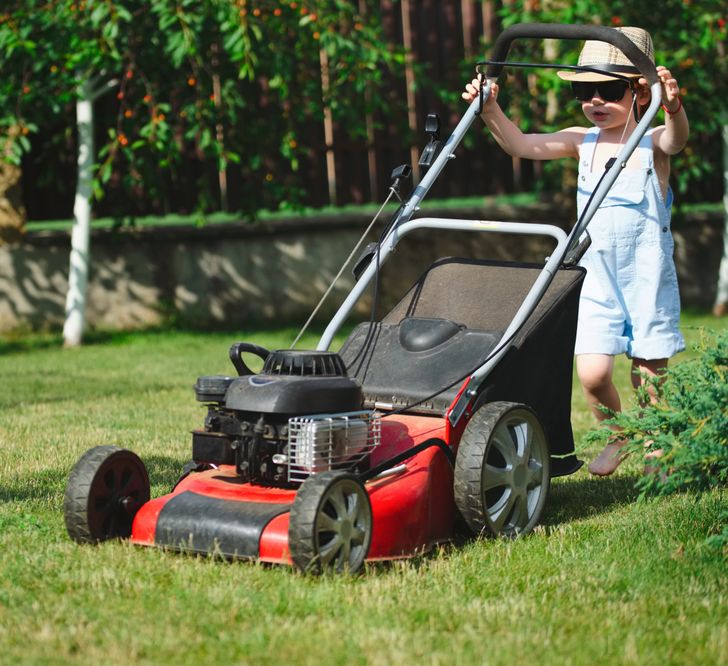
Both pushing and riding lawnmowers are heavy and extremely dangerous machines and can easily harm a young child who will probably want to come closer and see how it works. From cases involving kids falling from dad’s lap and getting injured to kids getting trapped under the heavy machinery to having eye injuries from the cut grass, this is not something you want your kid around.
According to HealthyChildren.org, in the United States alone “more than 9,000 children go to the emergency room for lawn mower-related injuries every year.” Children should stay inside the house as a precaution and be sure that neighborhood children aren’t around either.
10. Climbing on outside equipment
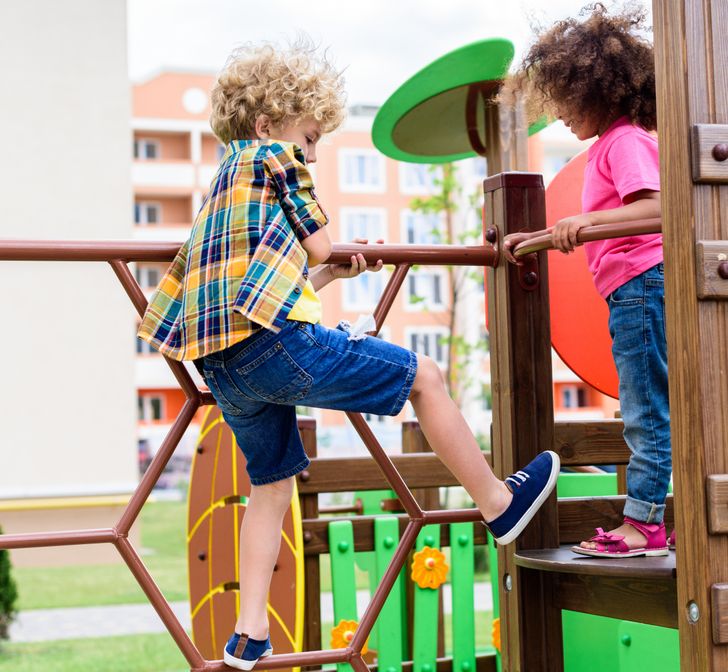
Playgrounds are children’s and parents’ favorite destination, however, continuous supervision is needed in order for kids to return safely home.
According to the Centers for Disease Control and Prevention, more than 200,000 cases of children injured on the playground, some of which are fatal, end up in the ER every year in the USA alone. Most of them are caused by climbing. Even though it looks fun and athletic, climbing is one of the most common causes of falls and serious injuries.
11. Riding a bike without a helmet
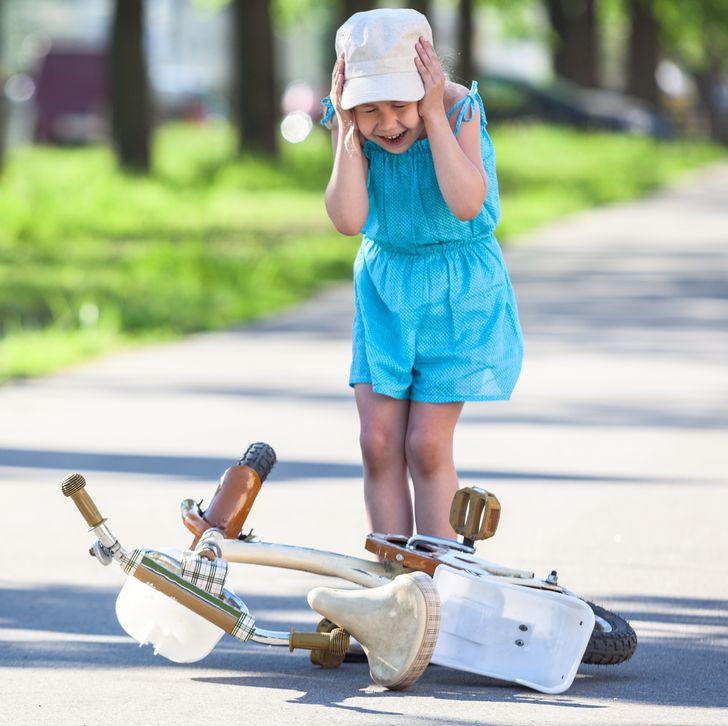
It’s no surprise that cycling is one of the kids’ favorite activities since it gives them a sense of independence, freedom, and fun — exactly what they want. However, riding a bike can be dangerous when riding irresponsibly, especially for kiddos.
What applies to adults, of course, applies to children too. Wearing a helmet is the number one safety rule since it protects the head in case of a fall. Wearing one can prevent brain injuries and severe trauma. It is also important to never let your kid ride unsupervised. Cycling can be a great family activity, so be a good example and ride along with them with your helmet on.
We hope that this selection of potential dangers will help you and your kids enjoy a safer daily life. Are you an overprotective parent? What was the most dangerous adventure you got into as a kid? Tell us your stories in the comments.
Liam Payne’s Final Words to His Partner Will Leave You Heartbroken
Kate Cassidy shared a heartfelt post on Instagram, including a note from Liam Payne, which revealed his plans for their future and showed the beautiful memories they shared.
Just three days after being seen in public for the first time since her boyfriend Liam’s unexpected passing, Kate posted the tribute on October 23, 2024. The lovely photos she shared touched fans deeply, but it was Liam’s note, given to her weeks before his death, that truly left fans heartbroken.
Kate’s post offered a look into the happy life she shared with the late “Teardrops” singer. Her images showed the couple going on adventures together.
Whether they were spending time outdoors or cozying up in snowy surroundings, her photos radiated pure love and joy.

Kate Cassidy shared an emotional Instagram post following Liam Payne’s death. In her message, she expressed her heartbreak and said she wished Liam could have seen the impact he had on the world and known how deeply he was loved.

She wrote, “You are — because I can’t say were — my best friend, the love of my life, and everyone you touched felt just as special as I did. Your energy was contagious, lighting up every room.” Cassidy also shared how she is struggling to continue without him, describing Liam as “the best part” of her.

Cassidy also shared how hard it is to move forward without Liam, saying she lost “the best part” of herself. She mentioned a note he had given her, adding, “I know we’ll be together forever, but not in the way we had planned. You’ll always be with me. I’ve gained a guardian angel.”

One touching image showed a playful side of Liam, wearing pink Mickey Mouse ears and making a silly face at the camera, while Kate smiled next to him.

Another image showed them dressed up, posing at an event surrounded by beautiful scenery. Another picture captured them with their dog, sharing a sweet moment with the happy pup.
In another image, Liam, bundled up in warm clothing, playfully posed near a signpost with multiple destination markers.

One photo showed Kate caressing Liam’s face while he smiled, capturing a loving moment. Another image showed them sharing a kiss in front of a building, expressing their closeness.

In the last photos, Cassidy posted a note she received from Liam that read, “me and Kate to marry within a year/engaged & 2gether 4ever 444,” written in pencil. With the note were two cards, one reading “444” and the other showing a rose drawing.

Cassidy explained that the number “444” holds spiritual meaning, often appearing when someone feels alone, signifying angelic presence and reassurance.

After Kate’s post, fans flooded her comments with messages of sorrow. One wrote, “This has broken me more than I thought possible ,” while another added, “So sorry for your loss my heart is shattered .”

Another commented with teary emojis, while someone else expressed support, saying, “I can’t even imagine what you’ve been through; you are so strong, love. Big hug
In a past interview from 2019, Liam shared his thoughts on love, describing how he valued being with someone who was both his best friend and partner. He expressed joy in finding someone who supported him fully.

Through Cassidy’s recent words, it’s clear her relationship with Liam was also special, filled with deep love and joy.
Recently, Kate was seen for the first time since Liam’s death. She was out in Florida with friends, buying pet supplies on October 20. Fans noticed her somber expression and showed their concern.

One fan commented, “My heart is breaking for her…she looks so exhausted.” Another added, “She is devastated and heartbroken.”
Others found comfort in seeing her with their shared dog, Nala. “God bless her. I’m glad to see Nala with her. I hope Kate will be okay,” wrote one fan, while others commented on how sad and “empty” she appeared.
Fans also urged the paparazzi to give Cassidy privacy to grieve. One user sympathized, writing, “So sad to lose someone you love.” Another added personal reflections on loss, saying, “Prayers to her and the family.”

Others expressed sadness, with comments like, “I can’t imagine how broken she is. So much happened in such a short time,” noting how “gutted” she looked.
One person reflected, “She looks sad; the guilt she must be feeling right now, wouldn’t have left him alone, especially under such difficult circumstances.” Another added, “She looks miserable. Prayers for her.”
Cassidy’s sighting came shortly after Liam’s death on October 16 in Buenos Aires, Argentina. The 31-year-old singer fell from his third-story hotel room balcony. Although his passing initially seemed mysterious, it was later revealed he had been under the influence of strong drugs.
On social media, Cassidy reportedly paid tribute to him, asking for privacy to grieve, expressing how nothing felt real, and thanking fans for their love and support.

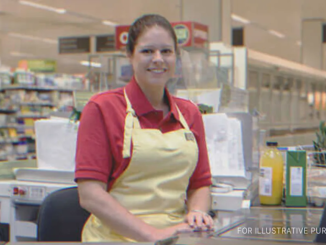
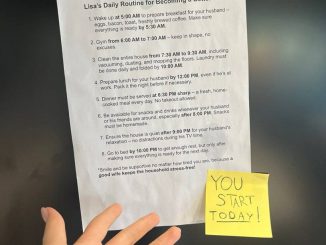
Leave a Reply